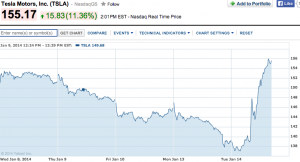 Let’s say you are sending 100,000 emails out for something like a newsletter or CTA to your user base. Getting the best time of day and best day of week matters. If you have sophisticated internal analytics you should try to track all the way back to the desired CTA of the email. As in, did the email generate users upgrading to paid at a particular time of day, or did you get more transactions or whatever your goal was with the email. But an easy, and important, metric that most marketers can track is the click/delivery rate.
Let’s say you are sending 100,000 emails out for something like a newsletter or CTA to your user base. Getting the best time of day and best day of week matters. If you have sophisticated internal analytics you should try to track all the way back to the desired CTA of the email. As in, did the email generate users upgrading to paid at a particular time of day, or did you get more transactions or whatever your goal was with the email. But an easy, and important, metric that most marketers can track is the click/delivery rate.
Let’s focus on that 100,000 email send example. A swing of 3% in your click/delivery is 3000 extra clicks! I’ve seen swings in the 10% range, easily, depending on when an email is sent.
There are a couple of ways to find out what your best time of day is to send.
- You could A/B test time of sending. This will help you slowly learn which times and dates work best. Your ability to learn anything in a statically significant way will be dependent on the volume of emails you are sending. This may take some time, but you will likely eventually figure out when you should be sending to your users.
- You can also look at your transactional email metrics. This is a great place to start your hunt because you are likely to have a lot of data in here to play with. If you can extract transactional emails that are as close to the type of newsletter email you want to send you can analyze the best day of week and time of day to send your newsletter.
- As a bonus idea, if you are lacking in real email interaction data (as in you are really just starting your email marketing) then you can use the time of day data from your service’s analytics package. When are people most likely to use your product? You can use this as a rough proxy to begin A/B testing time of day/day of week email campaigns.
Mailchimp has great stats on generic marketing email sends, and you should read their post on best time to send emails here. It’s a good place to start if you have no data, and it is also cool to see high level data/aggregated data.
When you get really big lists you can start to test within segments. For example, if you have some business users and some consumer users, they are very likely to react differently to different email timing. (Of course you should also be sending them different email copy, but that’s a whole other topic.)
Finally, every company that I’ve worked with has had Tuesday and Wednesday be good days to send emails. Maybe not the best best day (that really varies by company) but those days usually don’t disappoint. Time of day, on the other hand, has been different for every product I’ve ever worked with.
 My wife and I have been fans of big Sonoma Zin’s for a long, long time. We went through a phase where we drank really, really big wines – the super jammy, tannic monsters that Europeans dislike but Americans love.
My wife and I have been fans of big Sonoma Zin’s for a long, long time. We went through a phase where we drank really, really big wines – the super jammy, tannic monsters that Europeans dislike but Americans love.


